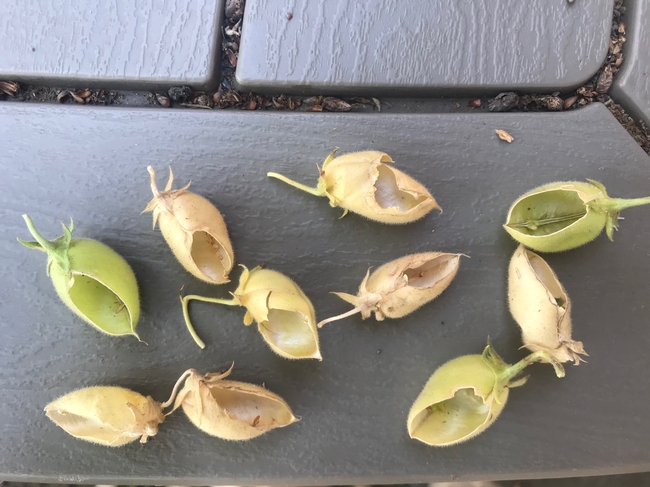Have you ever wondered about this damage to garbanzo beans where there's a hole clipped in the pod and the seed is missing (see photo)? In this case, the damage is from pesky ground squirrels that were foraging in and around our garbanzo research plots at UC Davis this spring. However, other culprits could include field mice or voles, rats, and pod borers such as corn earworm. If you suspect caterpillar worm pests, you should be able to find them easily enough in the plant canopy. Sometimes corn earworms move from corn fields into garbanzos, so watch for infestations from nearby corn fields. Field mammals are more elusive, though ground squirrels are active during the day and easy to spot.
Generally, garbanzos have few pests because the plants (including seed pods) are covered with tiny glands that secrete acids that help repel pests. These acids are strong enough to cause skin rashes and damage clothing. However, ground squirrels don't seem bothered at all by these plant acids as they thrived on our garbanzo seeds, green and dried alike! Looking back, we should have paid more attention to where the field trial was located, avoiding places where ground squirrels thrive, such as a nearby ditch bank. We also should have controlled them as soon as they were active.
Ground Squirrel Control. Various methods can be used to control ground squirrels around fields, including fumigation, trapping, and toxic baits. Of critical importance is the timing for control. Effective management depends heavily on understanding the unique life cycle and behavior of the California ground squirrel. Baiting with treated grain is effective in summer and fall because squirrels primarily feed on seeds during this period. Burrow fumigation is most effective in spring, when moist soil helps seal gasses in the burrow system. Fumigating at this time is also more effective in reducing ground squirrel numbers since squirrels die before they can reproduce. More information on ground squirrel management can be found on the UC IPM website for ground squirrel control at http://ipm.ucanr.edu/PMG/PESTNOTES/pn7438.html.